2006 Audi R10 (original) (raw)
Audi competes with a diesel sportscar at Le Mans AUDI AG is once again one step ahead of the opposition: The inventor of ‘TDI’ will become the world’s first automobile manufacturer to fight for overall victory with a diesel engine in the famous 24 Hours of Le Mans. The all-new Audi R10 TDI is powered by a totally new 5.5-litre, twelve-cylinder bi-turbo TDI engine,
which is extremely quiet and economical.
Specifications
- Make: Array
- Model: audi-r10
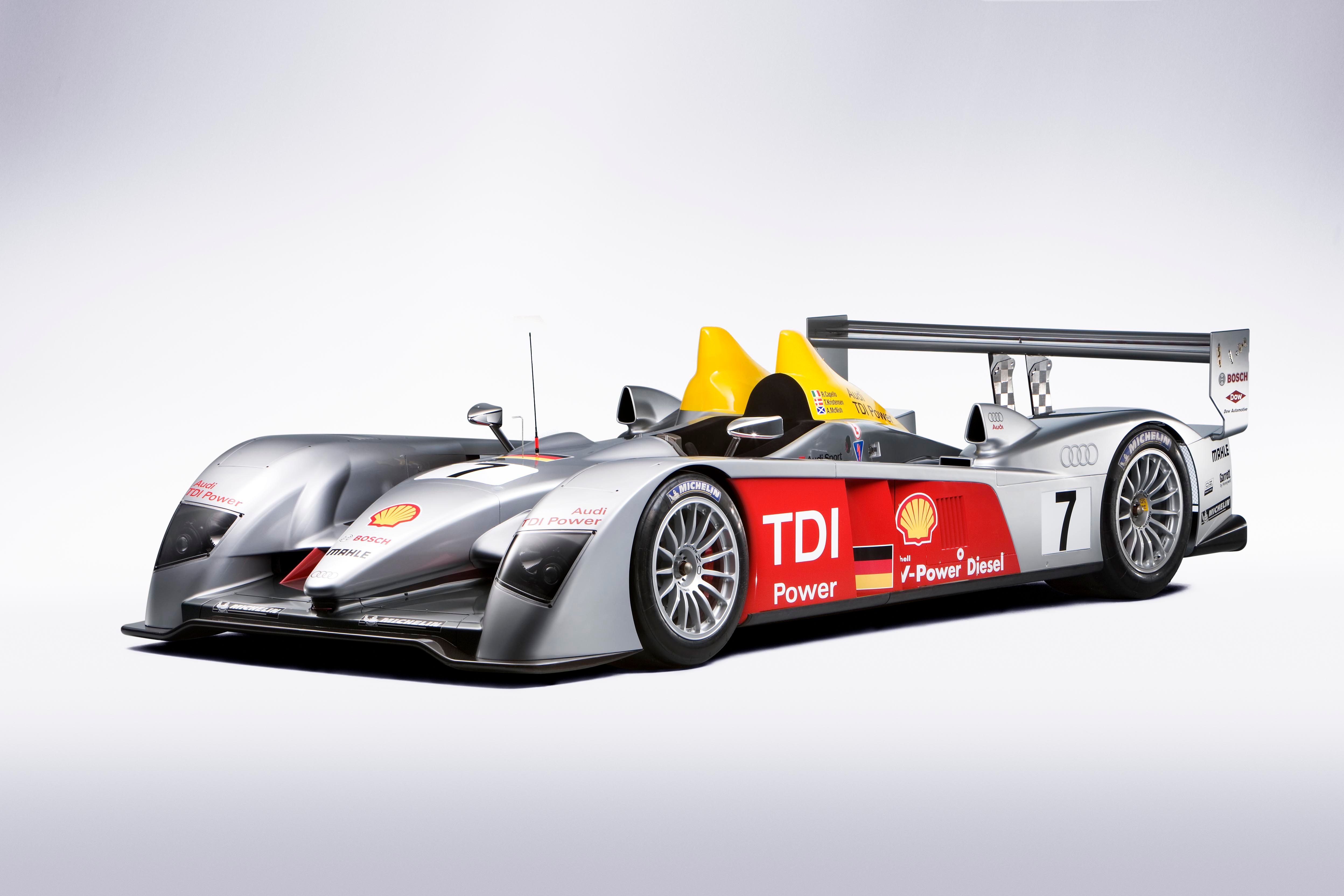
Specifications
- [do not use] Vehicle Model: Array
The Le Mans Prototype, with over 650 hp and more than 1100 Newton metres torque, significantly exceeds the power produced by the majority of previous Audi racing cars – including that of its victorious R8 predecessor. Audi ventures into previously unexplored diesel-engine terrain with the V12 power plant manufactured completely from aluminium. As with the TFSI technology, which triumphed initially at Le Mans before being adopted for mass-production in Audi premium models, Audi customers should benefit once again from the lessons learnt in motorsport.
“With the A8 4.2 TDI quattro, Audi already builds one of the most powerful diesel cars in the world,” explained Professor Dr Martin Winterkorn, Chairman of the Board of Management of AUDI AG, at the R10 TDI presentation in Paris in December 2005. “The Le Mans project will help our technicians to extract even more from TDI technology. Nowadays, every second Audi is delivered with a TDI engine. We expect that the percentage of diesel engines will be even larger in the future.”
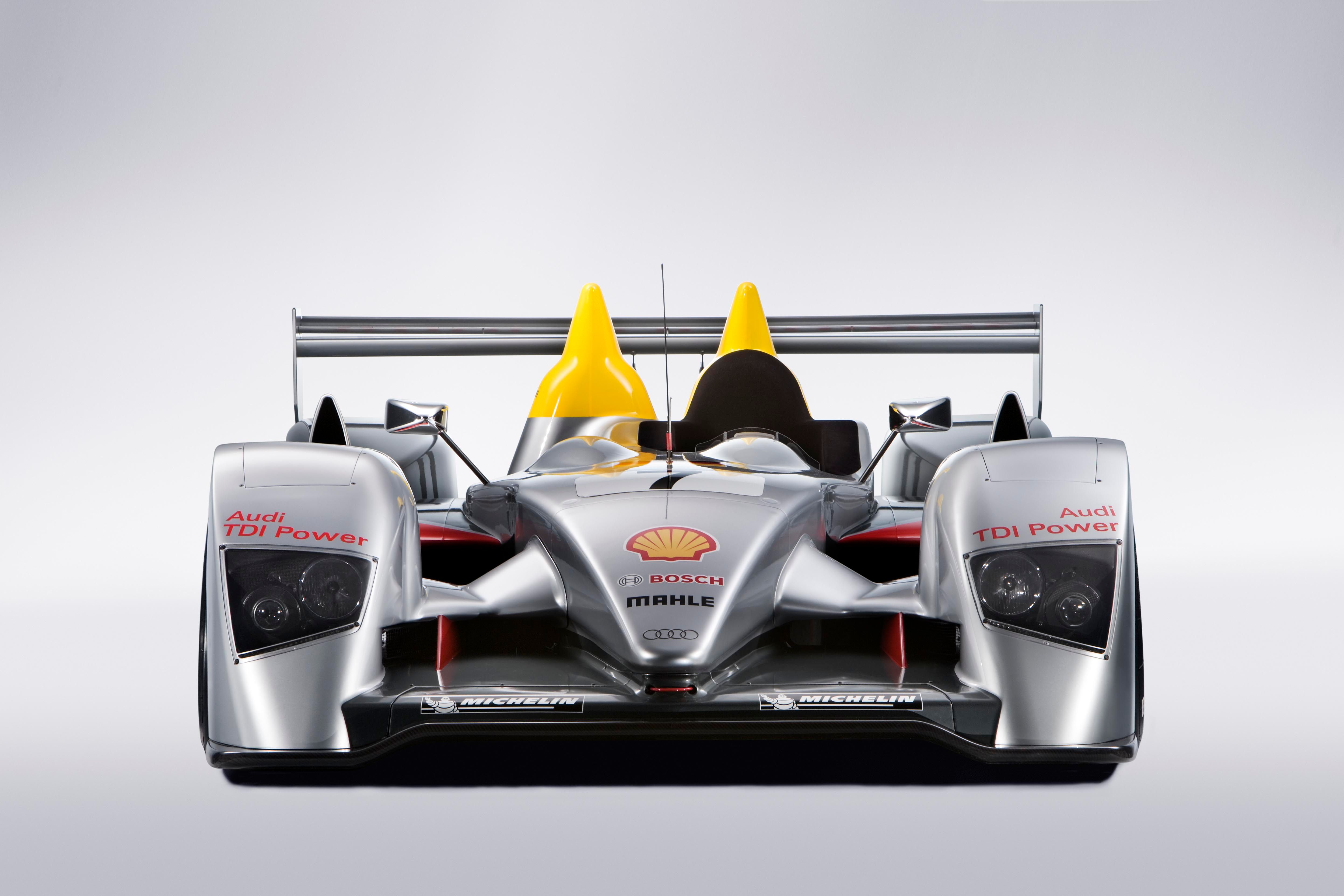
The R10 TDI prototype’s V12 power unit, which is equipped with two diesel particle filters, is hardly recognisable as a diesel thanks to the engine’s smooth running nature. The TDI engine’s specialities presented the Audi Sport engineers with a whole list of challenges. The injection pressure easily exceeds the 1600 bar achieved in production cars. The usable power band lies between 3000 and 5000 revs per minute – an unusually low rev range for a racing engine. The driver must change gear in the R10 TDI far less often than in the R8 because of the TDI engine’s favourable torque curve. As a result the R10 TDI only has five forward gears.
The enormous torque of over 1100 Newton metres does not only make extreme demands of the R10 TDI transmission system – even the latest generation of engine dynamometers at Audi Sport had to be re-equipped in order to withstand the unusual forces.
Additionally, radical changes to the chassis were also necessary. The Audi R10 TDI has a significantly longer wheel base than the R8. The larger front tyres which significantly improve the handling are, up to now, unique for a Le Mans Prototype. New technologies were also implemented during the development of the carbon-fibre monocoque. Chassis, engine and gearbox form an extremely rigid, fully stressed unit.
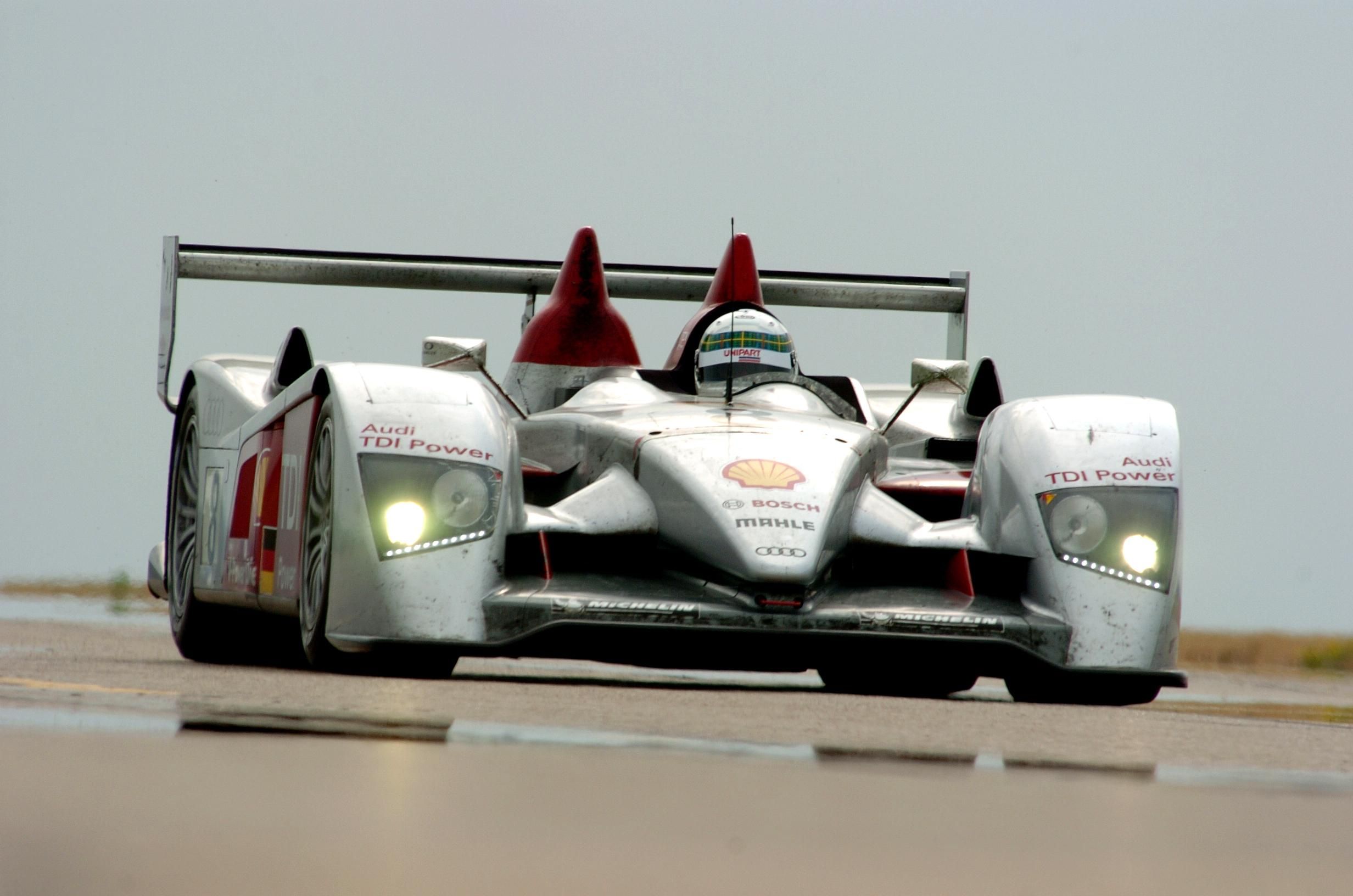
“The R10 TDI project is the biggest challenge ever to have been handed to Audi Sport,” says Head of Audi Motorsport Dr Wolfgang Ullrich. “TDI technology has not been pushed to its limits in motorsport yet. We are the first to confront the challenge of a race Diesel engine for a sport-prototype according to the new ACO regulations. The demands of such a project are accordingly high. Long-term technology partners such as Bosch, Michelin and Shell support us in our quest. Together we have the chance to write new chapters in the history books of motorsport and diesel technology.”
The new Audi R10 TDI wrote a piece of motorsport history at the first time of asking in its début race: Dindo Capello (Italy), Tom Kristensen (Denmark) and Allan McNish (Scotland) won the 12-hour race at Sebring in March and presented the Diesel powered sportscar with its first win in an international endurance race.
-----
V12 TDI made entirely from aluminium
At the heart of the Audi R10 TDI is a completely new V12 TDI engine with a cubic capacity of 5.5 litres – the maximum permitted at Le Mans. Audi ventures into previously unexplored diesel-engine terrain with power exceeding 650 hp and torque of more than 1100 Newton metres from the V12 power plant. “If you take into account the specifications in the regulations regarding the maximum turbo pressure and the diameter of the air intake restrictor, the engine is the most powerful diesel there is in the world and, up to now, the greatest challenge Audi Sport has ever had to face in its long history,” explains Ulrich Baretzky, Head of Engine Technology at Audi Sport. “There has never been anything remotely comparable. We started development with a clean sheet of paper.”
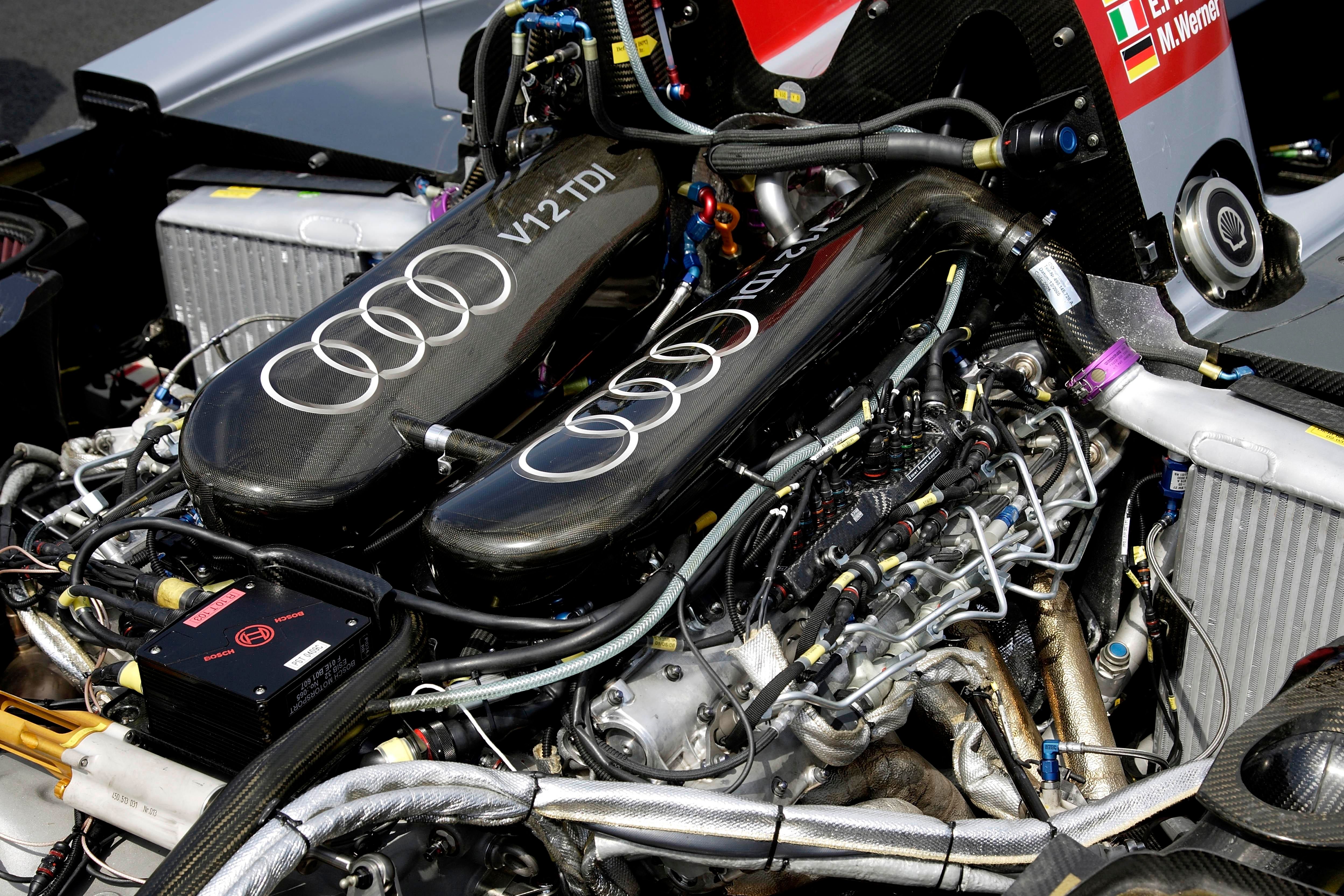
The V12 TDI engine’s crankcase is manufactured from aluminium – a design which could also possibly be used in production cars in the future. The V12 TDI has, like Audi production car engines, four valves per cylinder and twin overhead camshafts. The cylinder-bank angle is 90 degrees. The fuel induction is made by a modern Common Rail System co-developed by Audi Sport and Bosch. The injection pressure easily exceeds the 1600 bar achieved in production cars. The ignition pressures also reach values never previously seen in any Audi engine. The turbo pressure produced by the two Garrett turbochargers is limited by the regulations to 2.94 bars absolute, the diameter of both engine air intake restrictors, stipulated by the regulations, is 2 x 39.9 millimetres. The engine management is controlled by the latest generation of Bosch Motronic (MS14).
The engine’s power and the high torque are available to the driver practically from idling speed – a speciality of diesel technology, to which the Audi drivers first had to become accustomed. The usable power band lies between 3000 and 5000 revs per minute. Unfamiliar to the driver at this early stage, is the low noise level and, unique for a racing engine, the smooth running V12 TDI power unit. At high speeds the powerful 650 hp engine can not be heard from the Audi R10 TDI prototype’s “open” cockpit while there is also hardly any vibration. On the outside, the modern twelve-cylinder produces a faint, but sonorous sound that is quite difficult to identify as a diesel power unit at first. The new R10 TDI can only be recognised acoustically as a diesel-powered sportscar during the warming-up process or in the pit lane.
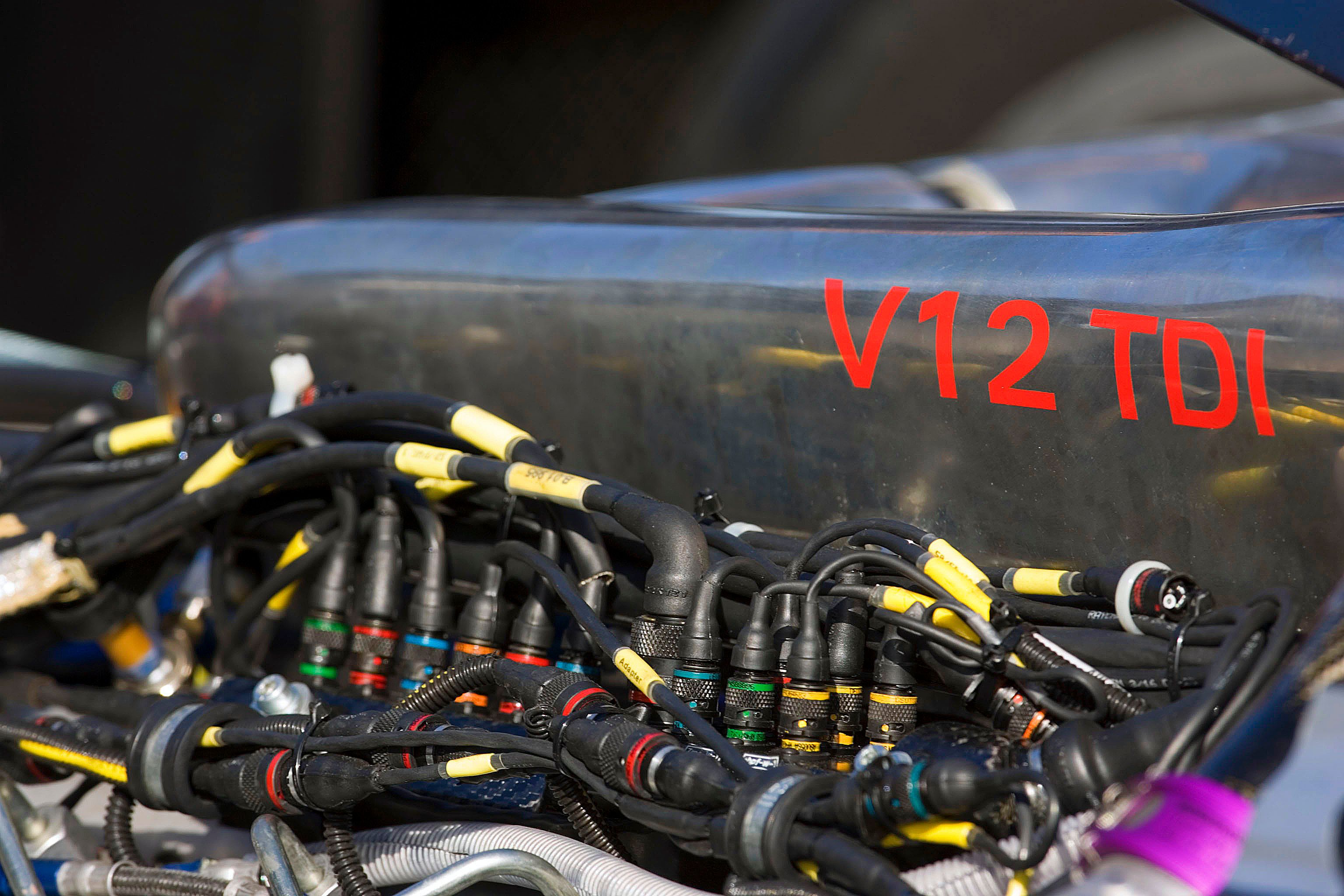
There are no visual signs that a diesel power unit is at work in the back of the R10 TDI. It goes without saying that the V12 TDI is equipped with a pair of diesel particle filters for the 24 Hours of Le Mans. Flashes of flame from the exhaust, which are created by unburned petrol in spark-ignition engines, are not seen coming from the R10 TDI. One of the diesel engine’s biggest advantages is the low fuel consumption, especially at part-throttle and overrun. However, when compared to more classic circuits which demand a higher ratio of part throttle, the lower specific consumption will hardly be noticeable at Le Mans because the quota of fullthrottle is almost 75 percent.
The enormous torque of over 1100 Newton metres not only posed previously unforeseen demands in the development of the R10 TDI drive train. Even the latest generation of engine dynamometers at Audi Sport had to be reequipped in order to withstand the unusual forces. In particular the extremely high combustion pressures produced inside the V12 TDI create forces never seen before in a racing engine. However, the main target of the Audi technicians is to reach the reliability level of the R8, which never recorded a single engine failure in the 79 races it has contested to date. “We made a great deal of interesting findings about TDI Technology at the Sebring tests and during the race,” explains Ulrich Baretzky. “Many things behave completely differently than with a spark ignition engine, including, for example, that a Diesel responds in a completely different way to fluctuations in temperature.”
-----
New design with Audi R8 genes
At first glance, it is visible that the new Audi R10 TDI carries genes from the extremely successful R8. Nevertheless, the new LM P1 sportscar’s chassis is a new design, during which Audi Sport explored many new avenues. “The R8 originates from 1999, we’ve gathered a huge amount of know-how since then,” says Wolfgang Appel, Head of Vehicle Technology at Audi Sport. “All this experience found its way into the new R10 TDI.”
Audi’s target with the sports-prototype – currently the world’s most interesting motorsport category – is to set the standards once again and to highlight the company slogan “Vorsprung durch Technik”. Numerous innovative details and new design principles are used in the new Audi R10 TDI. One of the most significant differences to its predecessor, the R8, is the integration of monocoque and bodywork. The R8 still had a traditional chassis clothed in synthetic bodywork, whereas the majority of the carbon-fibre parts belonging to the R10 TDI monocoque are now suspended directly in the air flow and therefore require no additional fairings.
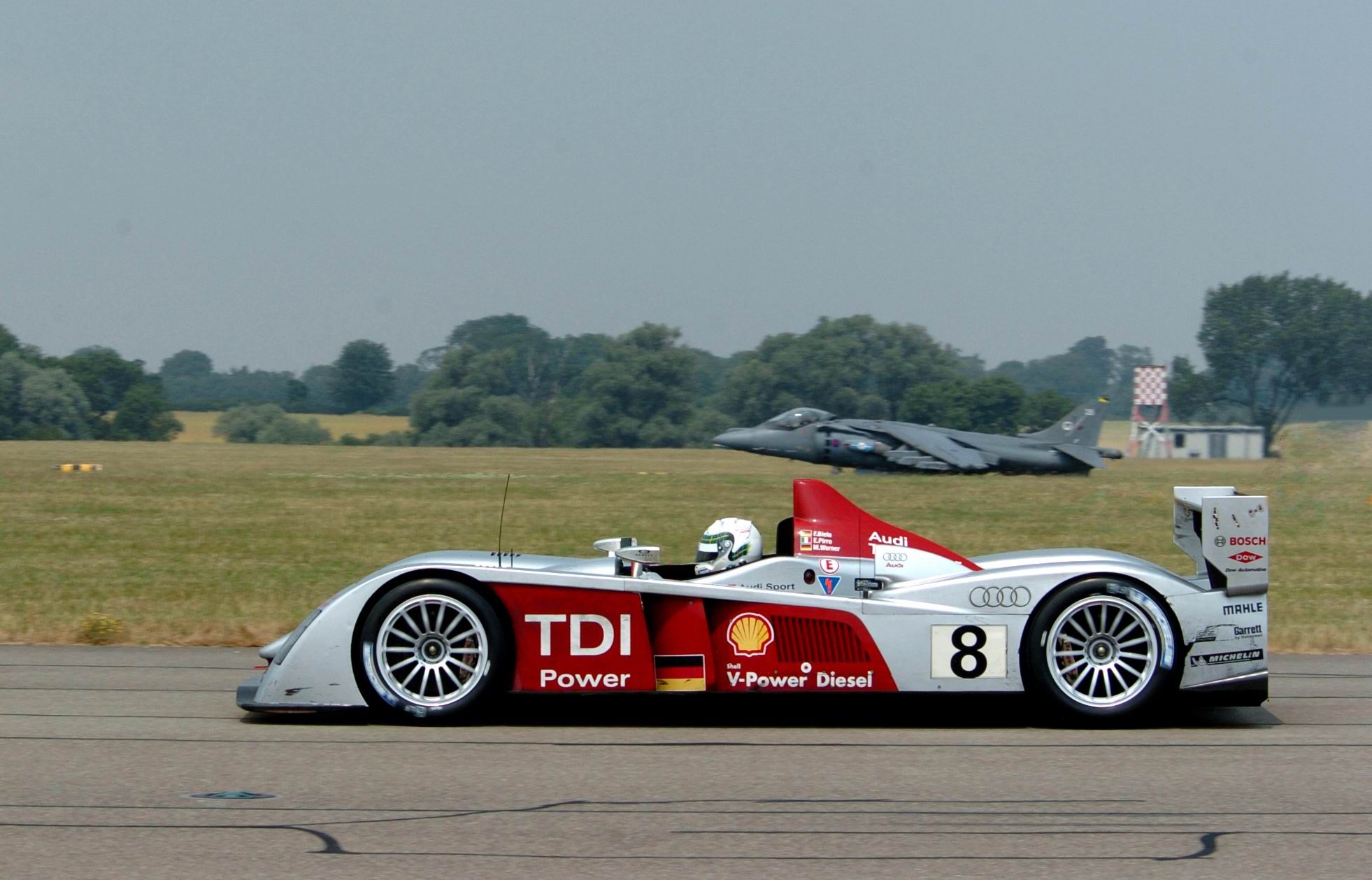
This leads to a significant weight saving when compared with the R8, which is of particular importance since the dimensions of the 5.5 litre V12 TDI engine of the R10 TDI, related to over 50 percent more displacement, make it longer and heavier than the 3.6 litre V8 power plant fitted to the R8. That’s why the new R10 TDI has a significantly longer wheelbase than its predecessor, comparable incidentally, with the new Performance SUV Audi Q7.
The modular design and serviceability known from the R8 was retained, but further refined, in the basic concept. It is not only the rear bodywork section of the R10 TDI that can be removed at the flick of a wrist, the front section, including crash structure, is also removable to ease access to the front suspension for the mechanics. It is possible to change various parts within a short space of time. The R10 TDI’s aerodynamic configuration is even more refined than that of the R8. Although the new LM P1 regulations created by the ACO (Automobile Club de l’Ouest) targeted a 15 per cent reduction in overall downforce, the Audi Sport technicians managed to regain the majority of aerodynamic efficiency lost as a result of this through intensive wind tunnel work. The R10 TDI silhouette is five centimetres flatter than its predecessor and has a much more pointed nose.
The “steps” in the front splitter, the larger distance between the track and the side pods and the additional roll-over structure on the passenger side, which clearly distinguishes the R10 TDI from its predecessor when viewed from the front, are stipulated by the regulations. The bulk of the changes implemented by the rule makers were made to make the powerful sport-prototypes even safer. Included in this catalogue of changes is the use of the HANS-System (Head and Neck Support), familiar in Formula 1, that protects the driver’s spine in the event of an accident.
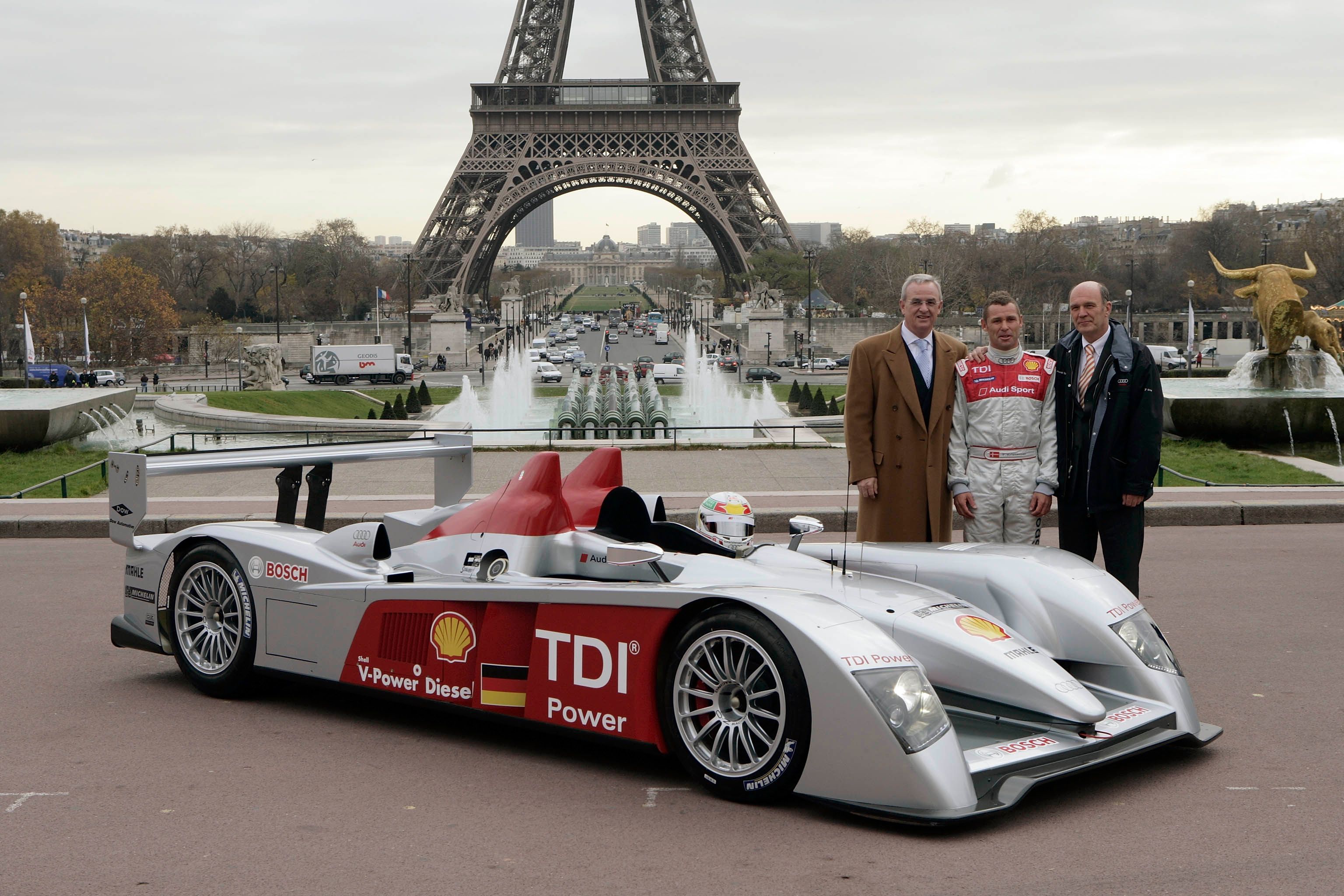
Although the R10 TDI prototype’s carbon-fibre monocoque is more waisted than that of the R8, the drivers can sit comfortably in the cockpit – good ergonomics being a factor not to be underestimated in a 24-hour race like Le Mans. The power steering, which is now electric instead of hydraulic, also helps to increase comfort.
A similar direction to that taken in production, was followed with the electronics. The number of electronic control units rose considerably when compared with the R8. A “network” system (CAN-Bus) runs through the entire R10 TDI, all important functions are controlled centrally by computers. Even the indicators and headlights are activated via electronic control units. The driver simply makes a manual impulse – everything else is done by the on-board computers.
A new vehicle data logging system (FDE) was developed for the R10 TDI together with electronic partner Bosch. All data is transmitted by telemetry to the pits and shown in the cockpit on a steering wheel mounted display, similar to the MMI-System found in Audi production cars. The most important functions are controlled by buttons mounted on the steering wheel, which is equipped with a micro-processor and was developed together with the specialist company Megaline.
The Megaline experts were also involved in the development of the electropneumatic shift mechanism, which is also activated in the R10 TDI by two steering-wheel mounted paddles. The gearbox itself originates from X-trac and, despite the enormous torque produced by the TDI engine, is lighter than that of the R8.
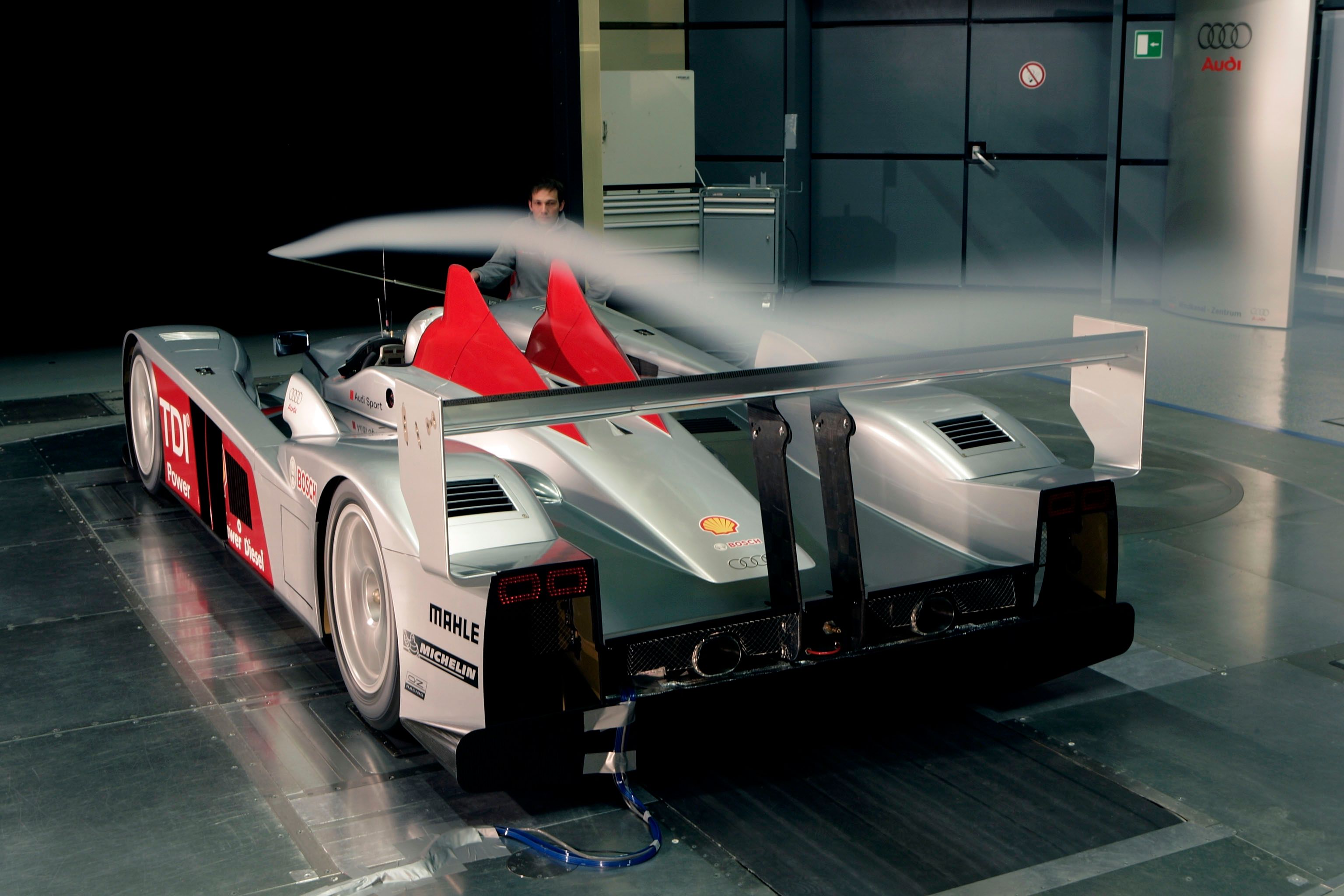
Owing to the turbo-diesel engine’s characteristics the R10 TDI only needs five gears, as a result the number of gear changes made during the 24-hour race falls significantly – an important factor concerning durability, particularly as the transmission system is subject to extremely high loads at Le Mans. Because of the high level of torque produced by the V12 TDI, the forces acting on the R10 TDI transmission system are even greater than those experienced by a Formula 1 racing car. The gearbox was conceived to withstand these forces as are the driveshafts which are thicker than the ones on the R8. The same is valid for the novel ceramic clutch that was developed together with ZF Sachs.
The greater thermal discharge and the corresponding increase in cooling requirements are also diesel specific. Higher side pods, in which the larger coolers are fitted, are the result. The larger front tyres, which were developed together wuth tyre partner Michelin, are completely new to the LM P1 class. They should reduce the inherent understeer tendency of sport-prototypes, which, in theory, is increased even further through the enormous thrust produced by the TDI engine.
The use of traction control (ASR) reduces the high loads created by the torque fed to the rear tyres, and helps the driver to modulate the V12 TDI engine’s power delivery, particularly in wet conditions, which represents a new dimension even for seasoned campaigners.
“It’s impressive just how the engine keeps on pushing even in the high gears,” says astonished three-time Le Mans winner Frank Biela, who was at the wheel of the R10 TDI during the roll-out at the end of November. The refuelling system re-developed with specialist company Stäubli, allows a fast and virtual splash-free refuelling process. In contrast to petrol, spilled diesel does not evaporate itself. As was the case with the R8, various coloured light-emitting diodes located close to the refuelling inlet vent act as initial visual information indicating the diesel, engine oil and water levels to the mechanics during a pit stop.
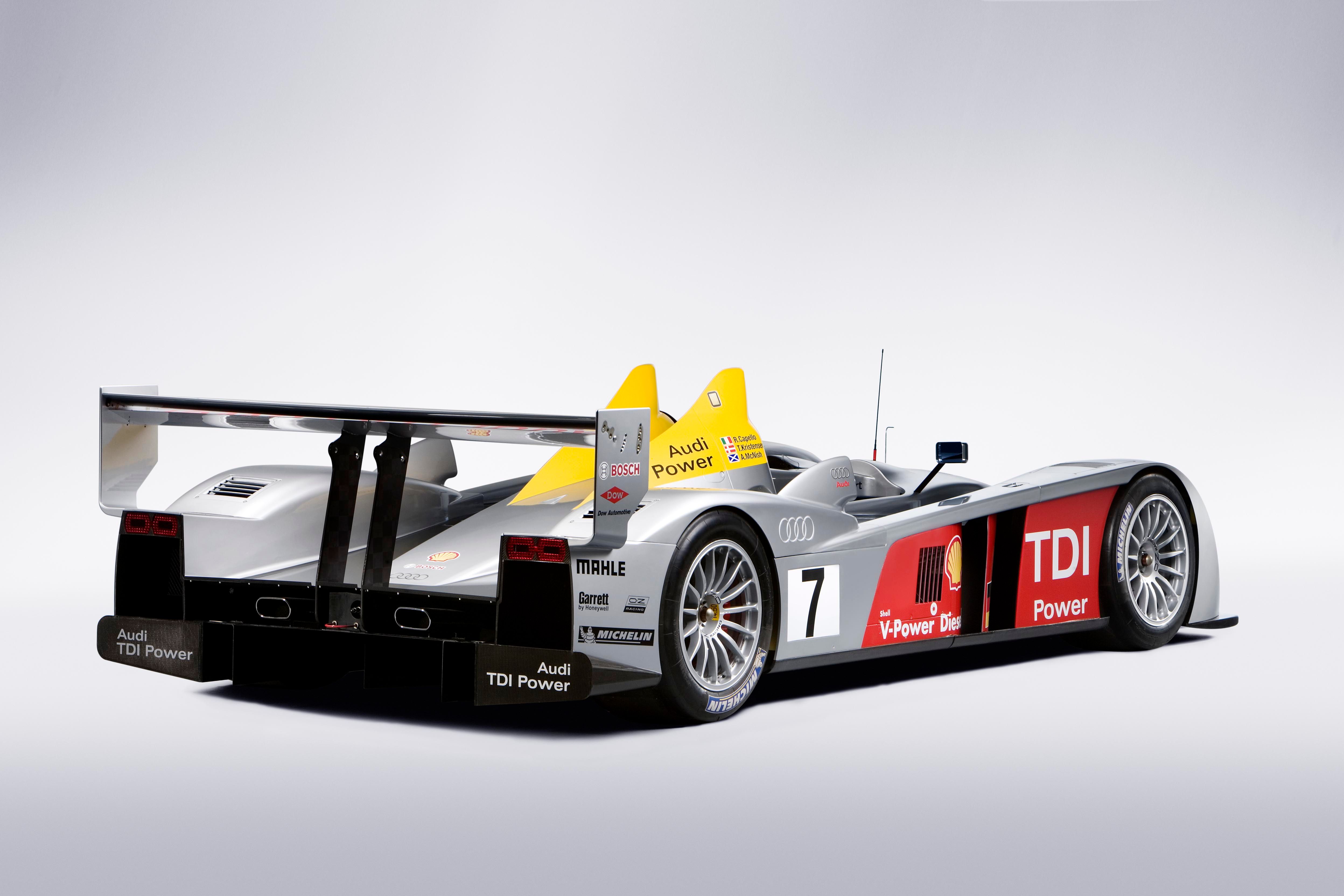
Fans at Le Mans will no longer be able to see glowing brake discs on the Audi R10 TDI: The carbon-fibre brakes discs are fully enclosed in a cowling, similar to the Audi A4 DTM, which optimises the air flow and, as a result, the brake cooling. Just like on Formula 1 cars, the brake discs are no longer fed with cooling air through pipes but are cooled by air channelled through carbon-fibre ducts mounted directly to the suspension. The brake calipers on the R10 TDI are reminiscent of those fitted to Audi RS models. The daytime low-beam lights, consisting of a row of white light-emitting diodes, which appear to have a light blue glimmer, also originate from production. The R10 TDI rear lights consist of very bright LED’s.